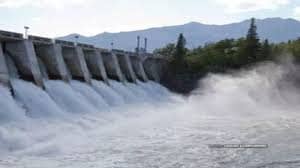
New Delhi/Srinagar – May 8, 2025
In a significant development amid rising tensions with Pakistan, India reportedly opened multiple floodgates of a major dam in Jammu & Kashmir, leading to a sharp rise in downstream water flow. The move has prompted Pakistan’s authorities to issue flood warnings in parts of Punjab and Sindh, raising concerns across the border.
Sources suggest that the gates of the Salal and Baglihar Dams, built on the Chenab River, were opened to manage excess water flow due to heavy rainfall in northern India. However, the timing—coming just days after India’s Operation Sindoor—has sparked speculation in Pakistani media, with some labeling it a deliberate “water bomb” strategy.
Indian officials, however, have firmly denied any political motive, calling the decision a standard hydrological safety measure. “Water levels had reached critical points due to intense pre-monsoon rainfall. It was necessary to release water to maintain dam integrity and protect upstream populations,” an official from India’s Central Water Commission said.
Despite this, the situation has added to Pakistan’s growing unease. Already under pressure from internal unrest and Baloch insurgency attacks, the country now faces the threat of flooding in vulnerable downstream regions. Emergency response units have reportedly been activated in Pakistan’s Dera Ghazi Khan and Rahim Yar Khan districts.
India, a signatory to the Indus Waters Treaty, is not in violation of the agreement, as it retains the right to use and manage water from the eastern rivers and limited non-consumptive use of western rivers like the Chenab and Jhelum. The World Bank, which oversees the treaty’s implementation, recently clarified it would not intervene in disputes outside the agreed framework.
While Pakistan voices concerns, analysts in India view this as a reminder of the strategic leverage water holds, especially in times of diplomatic or military friction





